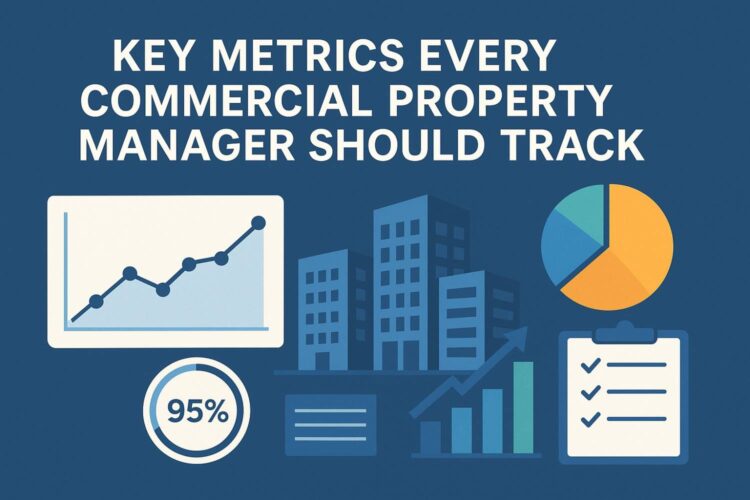Effective commercial property management is a data-driven discipline. While intuition and experience are valuable, the most successful managers rely on concrete metrics to gauge performance, identify opportunities, and mitigate risks. Tracking the right key performance indicators (KPIs) provides a clear picture of a property’s financial health and operational efficiency. It transforms management from a reactive process into a proactive strategy.
Focusing on these essential metrics allows you to make informed decisions that enhance property value and ensure long-term profitability. This guide explores the critical financial, operational, and tenant-related numbers every commercial property manager should have at their fingertips.
Financial Performance Metrics
Financial metrics are the foundation of property performance analysis. They directly reflect the profitability and financial stability of your asset.

Net Operating Income (NOI)
NOI is perhaps the most critical metric in commercial real estate. It is calculated by subtracting all operating expenses from all revenue generated by the property. This figure shows how much profit a property produces before accounting for taxes, interest payments, or depreciation. A consistently growing NOI indicates strong management and a healthy asset.
Occupancy Rate
The occupancy rate is the percentage of leased space compared to the total leasable area. A high occupancy rate is essential for maximizing revenue. This metric should be monitored closely, as even a small dip can significantly impact cash flow. Tracking it over time helps you understand market demand and the effectiveness of your leasing strategies.
Cash Flow
While NOI measures profitability, cash flow represents the actual money moving in and out of your property’s bank account. It accounts for debt service, capital expenditures, and other real costs that NOI excludes. Positive cash flow is vital for covering daily expenses, funding improvements, and providing returns to investors.
Operational Efficiency Metrics
Operational metrics help you understand how well the property is functioning on a day-to-day basis. They highlight areas where you can streamline processes and reduce costs.

Operating Expense Ratio (OER)
The Operating Expense Ratio compares a property’s operating expenses to its gross operating income. A lower OER is generally better, as it means a smaller portion of income is consumed by expenses. Monitoring this ratio helps you identify rising costs and find opportunities for greater efficiency, from negotiating better service contracts to implementing energy-saving measures. This is a key area of focus for top-tier property management companies in Utah and across the country.
Maintenance and Repair Costs
Tracking the cost and frequency of maintenance requests provides insight into the building’s physical condition. High or increasing repair costs may signal the need for capital improvements or preventive maintenance programs. Analyzing this data can help you budget more accurately for future expenses and extend the life of critical building systems.
Tenant-Focused Metrics
Your tenants are your primary source of revenue. Understanding their satisfaction and stability is crucial for maintaining a high-performing property.

Tenant Turnover Rate
High tenant turnover is expensive. It leads to lost rent, marketing costs, and expenses for tenant improvements. Calculating your turnover rate helps you understand tenant satisfaction and retention. A low turnover rate suggests that tenants are happy with the property and your management, which is a key indicator of long-term stability.
Rent Arrears
Rent arrears, or the amount of overdue rent, directly impacts cash flow. This metric should be tracked diligently. A rising trend in arrears may indicate issues with your tenant screening process or signal broader economic challenges affecting your tenants’ businesses. Implementing a firm and consistent collection policy is essential to keep this number low.
By consistently monitoring these key metrics, you can gain a comprehensive understanding of your commercial property’s performance. This data-driven approach enables you to optimize operations, enhance tenant relationships, and ultimately drive greater value for your asset.




